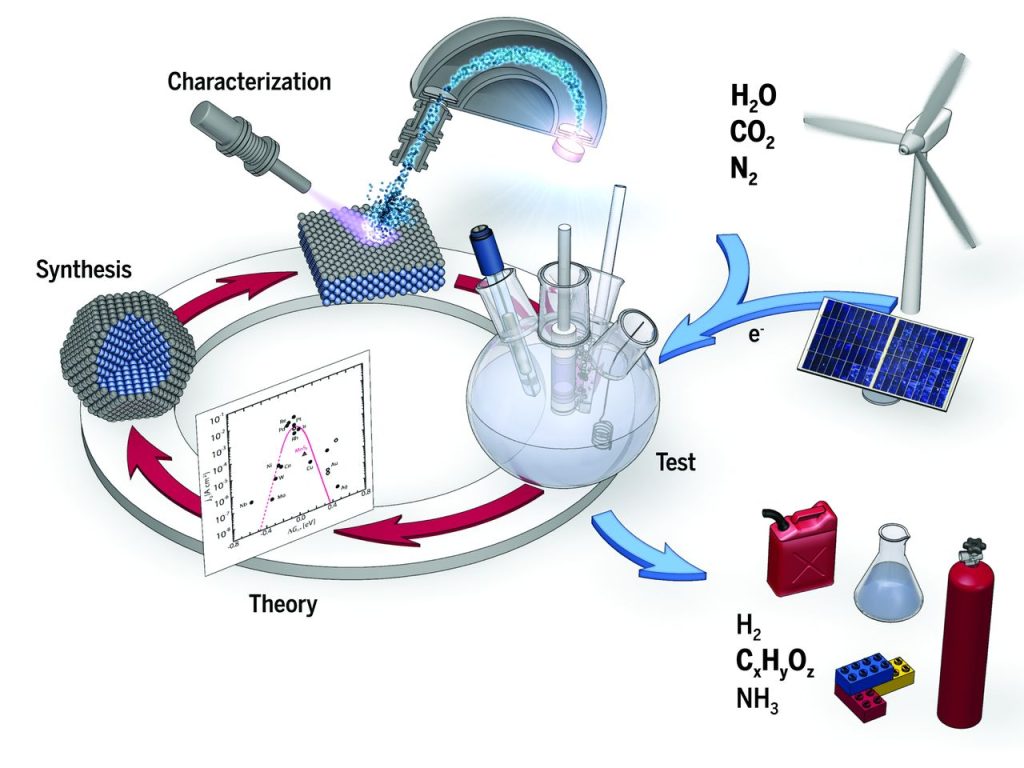As the global demand for sustainable energy solutions continues to rise, researchers around the world are tirelessly exploring innovative approaches to tackle the challenges of energy conversion and storage. Among the most pressing issues is the optimization of oxygen electrocatalysis, a crucial process in various energy technologies such as water splitting, fuel cells, and metal-air batteries. Traditional catalysts face significant limitations due to high activation energies, hindering their efficiency and scalability. However, a groundbreaking concept known as geometry-adaptive electrocatalysis, introduced by a collaborative team of researchers from the Universities of Tartu and Copenhagen, offers a promising solution. In this article, we delve into the intricacies of this revolutionary approach and its potential to transform the landscape of energy conversion technologies.
Understanding Oxygen Electrocatalysis: Oxygen electrocatalysis encompasses a series of reactions, including the oxygen evolution reaction (OER) and the oxygen reduction reaction (ORR), which are vital for the efficient conversion and storage of energy. These reactions involve the breaking and forming of chemical bonds, presenting formidable challenges due to their high activation energies. Traditional catalysts struggle to overcome these barriers, limiting their effectiveness and impeding the widespread adoption of energy conversion technologies. To address these challenges, researchers have long sought innovative catalyst designs capable of enhancing the efficiency and scalability of oxygen electrocatalysis.
Introducing Geometry-Adaptive Electrocatalysis: In a groundbreaking study published in ACS Catalysis Science and Technology, researchers from the Universities of Tartu and Copenhagen unveiled a novel paradigm for catalyst design: geometry-adaptive electrocatalysis. This innovative approach leverages catalysts that dynamically adjust their geometry during a reaction, circumventing the theoretical limitations that have hindered progress in oxygen electrocatalysis for decades. Led by Ritums Cepitis, a Ph.D. student at KongiLab, the research team demonstrated the potential of this concept to revolutionize energy conversion technologies.
Unlocking the Potential of Ideal Catalysis: The concept of geometry-adaptive electrocatalysis holds immense promise for overcoming the longstanding limitations of traditional catalysts. By dynamically adjusting their geometry to optimize reaction pathways, these innovative catalysts have the potential to double the efficiency of energy conversion and storage technologies. Dr. V. Ivaništšev, who developed the idea alongside Prof. J. Rossmeisl, highlights the transformative impact of this approach on the field of oxygen electrocatalysis. With ideal catalysis within reach, researchers are poised to unlock new possibilities in sustainable energy production and storage.
From Theory to Practice: Advancing Laboratory Research: While the theoretical framework for geometry-adaptive electrocatalysis has been established, the transition to practical implementation presents new challenges and opportunities. Associate Professor Nadežda Kongi, leader of the KongiLab research group at the University of Tartu, emphasizes the importance of translating theoretical insights into tangible advancements in the laboratory. As the research team embarks on experimental endeavors, creativity and innovation will be paramount in overcoming technical hurdles and realizing the full potential of geometry-adaptive electrocatalysis.
Driving Innovation in Energy Conversion: The development of geometry-adaptive electrocatalysis represents a significant milestone in the quest for sustainable energy solutions. By transcending the limitations of traditional catalyst designs, this revolutionary approach paves the way for unprecedented advancements in energy conversion technologies. As researchers continue to explore the potential of geometry-adaptive electrocatalysis, collaboration and interdisciplinary exchange will be key to driving innovation and accelerating the transition to a cleaner, more sustainable energy future.
The emergence of geometry-adaptive electrocatalysis marks a paradigm shift in the field of energy conversion. With its potential to double the efficiency of energy conversion and storage technologies, this innovative approach holds immense promise for addressing the pressing challenges of sustainability and climate change. As researchers embark on the journey from theory to practice, the transformative impact of geometry-adaptive electrocatalysis will continue to shape the future of energy production and storage, ushering in a new era of clean, renewable energy for generations to come.
